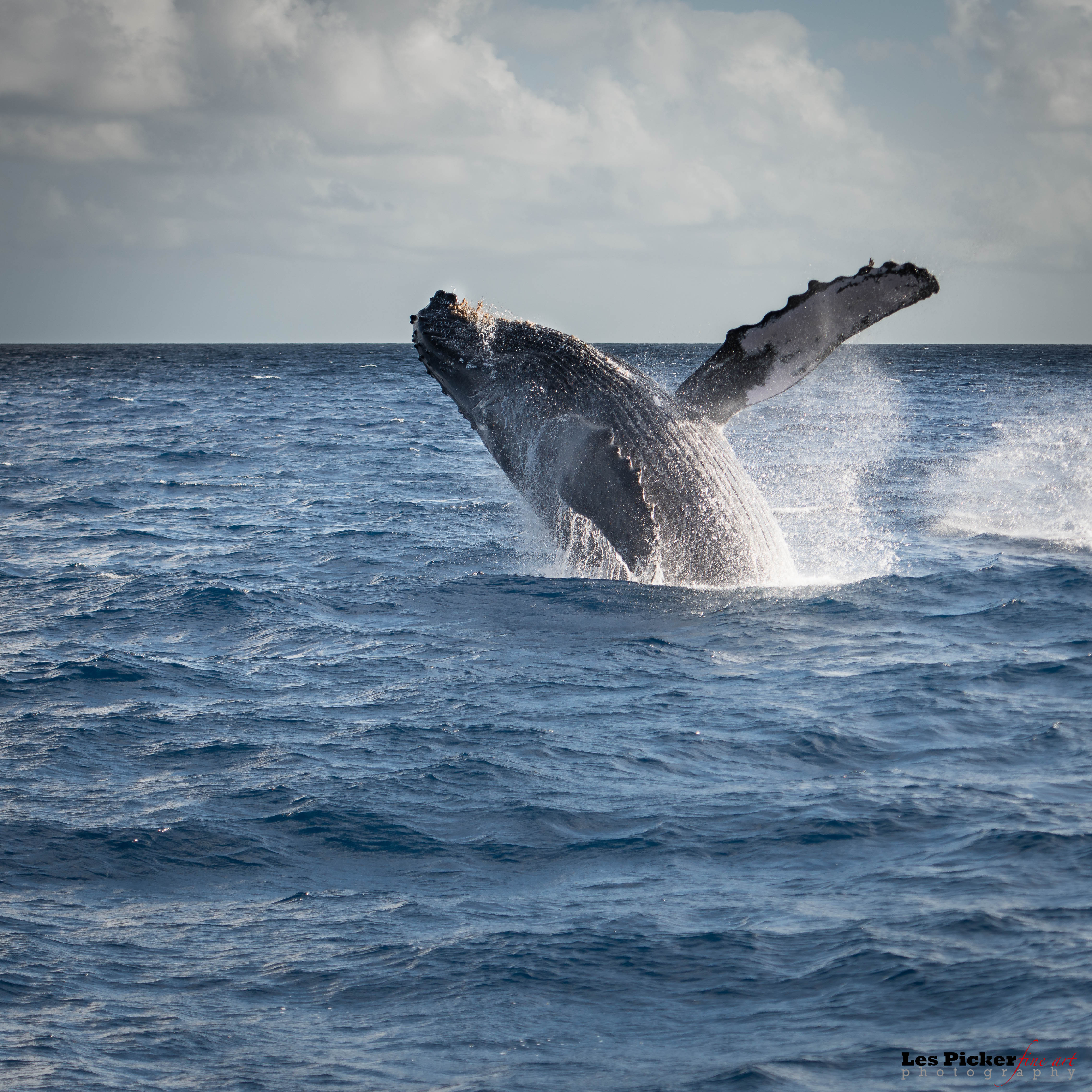
Photographing Whales off Maui
One of my favorite activities on Maui is to go on whale watching excursions. I try to do this at least once a week and always use the Pacific Whale Foundation’s trips out of Lahaina or Maalaea. Whales, like people, are unpredictable, so while you always manage to see whales, you may not catch them in full breach on any given trip. But last week was the forever anticipated full monty.
One of the main reasons I am a nature photographer is to increase the public’s awareness of our fragile natural world. To be honest, it can be discouraging. More and more species are lost to us or confined to areas that cannot sustain them for many more generations. Humpback whales are one of the notable success stories, ever since most whaling was banned.
Each year some 10,000 Humpbacks migrate more than 3,000 miles to the warm, shallow waters of Maui County. Here they birth and nurse their calves, free of killer whale predators. Other females breed here, ready to birth their calves the following year. For the months they spend here, they basically do not eat, shedding some 30% of their body weight.
On this particular day, we were hardly more than a few hundreds yards out of Lahaina Harbor when a massive male breached just yards in front of our boat. I was so surprised, I managed to only get a telephoto image of part of its from side. But from then on I was prepared and managed to capture some spectacular breaches. The two here are examples.

Photographing Whales
As an aside, it takes patience to get good whale images. A hit rate of 10% most would consider good. The boat moves and rocks, the wind blows, the whales move, you move.
I find that you must maximize shutter speed, trading off ISO in the process. I rarely shoot above ISO 200 for most of my work, but for whale images I’m shooting at ISO 400 and 800. As the sun sets I may even take a few shots at 1600.
Of course, you want to shoot wide open, at f2.8 if you can or, more likely, at f4 or 5.6 that most teles allow.
Both images were shot on a Nikon D800, using a 70-200mm f2.8 lens with a 1.3x teleconverter (bringing it to f4). The lead image here was shot at ISO 400, f4.5, 1/2000, at 190mm. The second was shot on at ISO 400, 1/2000, at 100mm.